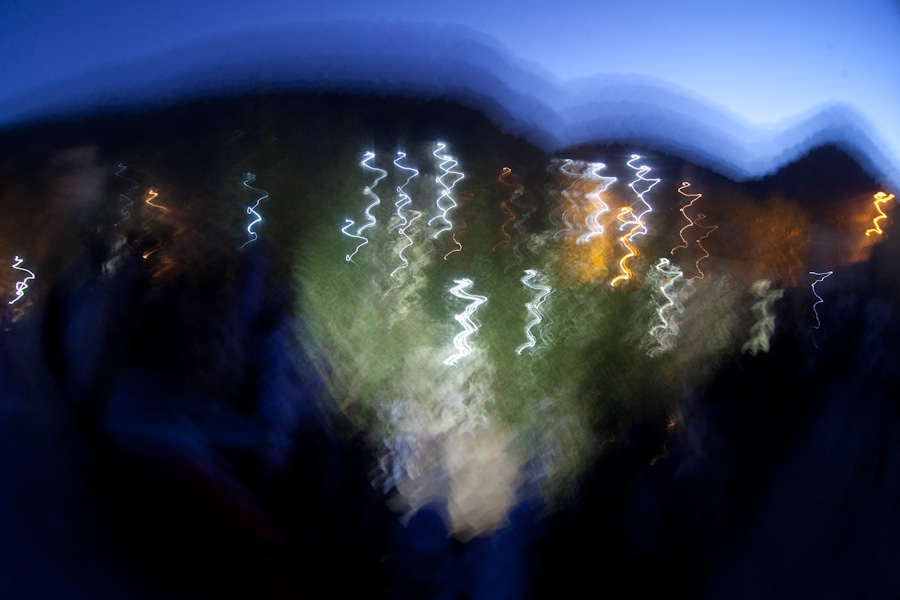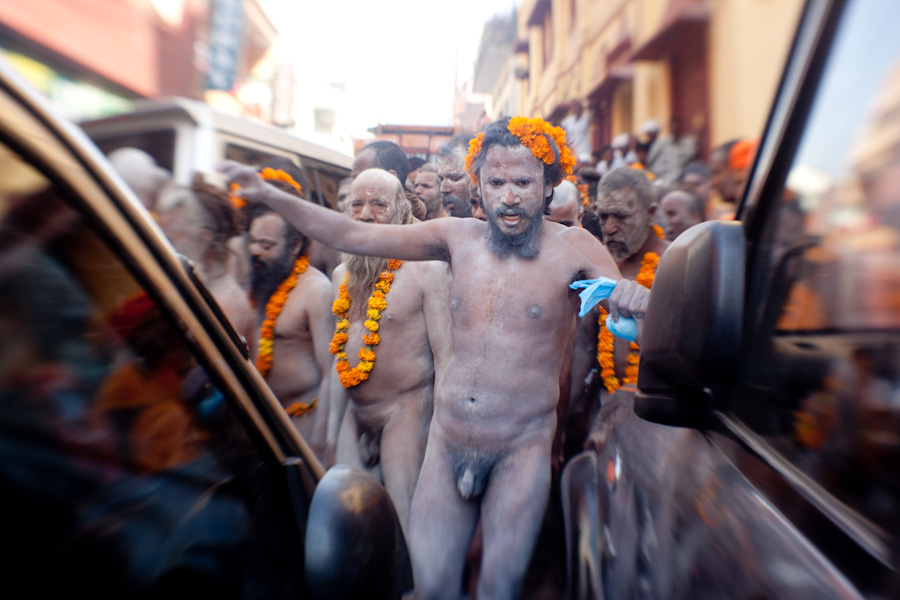
Saint Hippolytus (d. c. 230), writing about a century and a half before the date of Epiphanius, opens a vista into the hidden sense, or “higher wisdom”, of serpent veneration through his account of the cosmology of an Ophitic ( = snake worshiping ) Christian sect of his day called the Perates:
“Their cosmos consists of Father, Son, and Matter, each of
which three principles contains infinitely many forces. Midway
between the Father and Matter, the Son, the Logos, has his
place, the Serpent that moves eternally toward the unmoved Father
and moved Matter; now it turns to the Father and gathers
up forces in its countenance; and now, after receiving the forces,
it turns toward Matter, and upon Matter, which is without attribute
and form, the Son imprints the ideas that had previously
been imprinted upon the Son by the Father.
Moreover, no one can be saved and rise up again without the
Son, who is the serpent. For it was he who brought the paternal
models down from aloft, and it is he who carries back up again
those who have been awakened from sleep and have reassumed
the features of the Father”
***
Święty Hipolit ( ok. 230 r ) otwiera nam nową perspektywę na ( ten ) ukryty sens, czy też “wyższą wiedzę” kultów węża, dzięki swojemu opisowi kosmologii ophickiej ( czczącej węża ) chrześcijańskiej sekty współczesnej świętemu, zwanej Perates.
“Ich kosmos składa się z Ojca, Syna i Materii*, a każda z tych zasad zawiera nieskończenie wiele sił.
W połowie drogi między Ojcem i Materią ma swoje miejsce Syn, Logos, to Wąż,który wiecznie przemieszcza się
między niewzruszonym Ojcem i zmienną Materią, raz to zwraca się do Ojca i zbiera siły w jego obecności,
po ich otrzymaniu, zwraca się w stronę Materii, i na Materię, która jest sama bez atrybutu i formy,
Syn przenosi idee, które wcześniej z Ojca zostały na niego przeniesione.
Co więcej, nikt nie może zostać zbawiony i uniesiony ponownie, bez Syna, który jest wężem.
Bo tak jak był to on który przyniósł ojcowski wzór z góry tak jest i to on, który z powrotem w górę wznosi tych,
którzy zostali ze snu przebudzeni, i odzyskali cechy Ojca.”
*( zwłaszcza w opartych na łacinie językach widać wspólny rdzeń tego słowa z wyeliminowanym niemal zupełnie w patriarchalnych tradycjach żeńskim pierwiastkiem kultu Bogini Matki )

For, according to the view of most of the early Ophitic sects, the “Father” named in the cosmological figure of the Perates would have been not Yahweh of the Old Testament but a higher, more serene divinity, infinitely above him; and the first descent of the serpent from that infinitude would have been not voluntary but a fall; moreover, this fall would have been brought about precisely by the machinations of Yahweh, the Old Testament creator of this fallen world, which is mixed of divine light and foulest darkness.
***
Zgodnie z punktem widzenia większości wczesnych ophickich sekt, figura “Ojca” u Peratów oznaczała nie starotestamentowego Jahwe , ale wyższą, bardziej łagodną i spokojną istotę boską, nieskończenie ponad Jahwe, i pierwsze zstąpienie węża z tej nieskończoności nie było dobrowolnym, ale upadkiem, co więcej, ten upadek był skutkiem manipulacji tegoż właśnie Jahwe, starotestamentowego stworzyciela upadłego świata iluzji, który zmieszany jest z boskiego światła i najobrzydliwszej ciemności.

Briefly summarized: The basic idea of all these systems was that the origin of evil coincided with the act of creation itself. The god of the Old Testament, this secondary god-the Demiurge, as he is termed-created the world not from nothing but by engulfing a quantity of the light of the infinite true Father. This light, the Spirit, he lured, conjured, or ravished downward into Matter, where it now is entrapped. That was the first descent of the serpent, the Son, bearing the paternal models (or, as others might say, “the image of God”) from the kingdom of the Father into Matter. And these spiritual forces, images, models, or ideas are now held entrapped in the created universe by the Demiurge’s lieutenants, the Archons (= “rulers”) of the planets, who both control the laws of nature and enforce the commandments of the Old Testament – which are not of the true Father but of the Demiurge.
***
W wielkim skrócie : podstawowa idea tych wszystkich systemów jest taka, że pochodzenia zła należy szukać w samym akcie stworzenia. Bóg Starego Testamentu, ten podrzędny bóg – Demiurg – jak się go nazywa – stworzył świat nie z niczego, ale pochłaniając pewną ilość światła pochodzącego od nieskończonego, prawdziwego Ojca. To światło, tego Ducha, Demiurg zwiódł, zaczarował i podstępnie ściągnął w dół, do Materii, i tamże uwięził. To było pierwsze zejście Węża, Syna, niosącego ojcowski model ( czy też, jak inni to nazywają, obraz Boga ), z królestwa Ojca do Materii. I te właśnie duchowe siły, obrazy, modele czy też idee są więzione w stworzonym przez Demiurga wszechświecie, przez jego Archontów ( = “władców”), którzy kontrolują zarówno prawa natury jak i wymuszają przestrzeganie drakońskich przykazań zazdrosnego i paranoicznego Demiurga, spisanych w Starym Testamencie.

And so the second descent of the serpent was a voluntary downcoming, to release the entrapped spiritual forces; and the Bible story of the serpent in the garden is an account of this appearance. For the serpent there caused the male and female, Adam and Eve, to violate the commandment of the Demiurge, and so commenced the work of redemption. Yahweh struck back by delivering to Moses an impossible set of moral laws, to which the serpent then replied by coming down as the redeemer and taking up residence in a mortal, Jesus-who was not himself the redeemer, but the vehicle of the redeemer and as such taught the breaking of the laws, both of nature, through asceticism, and of the Old Testament, through his new gospel. As Paul had said: “Christ redeemed us from the curse of the law.” Therefore the various Gnostic sects, following this teaching of the serpent, do indeed break those laws in various ways: on one hand, in the ascetic sects, the laws of nature through severe asceticism; and on the other hand, in the orgiastic sects, the laws of the moral code.
***
Drugie zejście węża było dobrowolną wyprawą w celu uwolnienia spętanych duchowych sił, i o tym właśnie opowiada biblijna historia węża w ogrodzie. Bo to właśnie wąż spowodował że mężczyzna i kobieta, Adam i Ewa, złamali zakaz Demiurga, i uzyskali dostęp do prawdziwej wiedzy, tak zaczęła się praca wybawienia. Jahwe zemścił się i narzucił ludzkości dalsze pęta, dostarczając Mojżeszowi zestaw niemożliwych do spełnienia drobiazgowych praw, na co wąż odpowiedział ponownym zstąpieniem w świat Materii, jako zbawiciel, używając do tego jako wehikułu śmiertelnika – Jezusa ( który sam w sobie zbawicielem nie był ) – i w tej postaci nauczał łamania praw, zarówno natury, poprzez ascezę, jak i starotestamentowych, przez swój nowy, rewolucyjny przekaz. Jak powiedział to Paweł, “Chrystus wybawił nas od klątwy prawa”. Zatem rozmaite gnostyckie sekty, podążając za tą nauką węża, istotnie łamią te prawa na różne sposoby : z jednej strony, w ascetycznej formie negując prawa natury, z drugiej, w orgiastycznych rytuałach, prawa moralnego kodeksu.

Now, matter of itself is inert and formless. Given life and form by the entrapped spirit of the Father, however, it is the living, beautiful universe of man’s suffering and fear. The nature of this universe, therefore, is mixed. It is a compound of spirit and matter. Hence, although the usual Gnostic attitude was strictly dualistic, striving-like the Jains of India-to separate spirit from matter, with a strong sense of repugnance for the world, it is also possible to find in certain other Gnostic remains passages of inspiring affirmation; as, for instance, the words attributed to Jesus in the Gnostic Gospel “According to Thomas”:
“The Kingdom of the Father is spread upon the earth and men do not see it”;
or again:
“The Kingdom is within you and is without you. If you will know yourselves, then you will be known and you will know that you are the sons of the Living Father.”
***
Materia sama w sobie jest bezwładna i bez formy. Obdarzona życiem i formą przez uwięziony duch Ojca staje się jednak żyjącym, pięknym środowiskiem, ale zarazem miejscem cierpienia i strachu człowieka. Natura tego wszechświata jest zatem mieszana, składa się z ducha i materii, stąd dualistyczna postawa Gnostyków, starających się, podobnie jak indyjscy dżiniści, o ich rozdzielenie, co wiązało się z silną odrazą do świata, a jednak można też u nich znaleźć dowody inspirującej afirmacji. Przykładem mogą byc słowa jakie Jezus wypowiada w gnostyckiej, zakazanej przez kościół katolicki, Ewangelii wg św Tomasza ”
“Królestwo Ojca rozpościera się na ziemi a ludzie go nie widzą”
czy też tutaj :
“Królestwo jest w Was i obok Was. Jeżeli poznacie siebie, będziecie świadomi, i będziecie wiedzieć, że jesteście synami Żywego Ojca”

Given such a positive attitude, however, there would be no need to suppose that the Son, the serpent, was originally brought down against his will. He would have descended voluntarily, to bring forth from formless matter the glory of this universe; and in fact this seems to have been the sense of the cosmological image of the Perates, who (if our informant, Saint Hippolytus, describes their myth correctly) had nothing to say of any secondary creator. Their serpent continuously descends and ascends of itself, imprinting and releasing in a fluent round. Furthermore, by the members of the sect themselves, the name Perates was interpreted as derived from the Greek “on the opposite side,” which is exactly equivalent to the Sanskrit paramita, “the yonder shore.” And, as we have learned from numerous Mahayana Buddhist texts of exactly the period of these Gnostic Perates, there is a “Wisdom of the Yonder Shore” (prajna-paramita) , which is, in fact, the ultimate wisdom of Buddhist realization; namely, a knowledge beyond all such dualistic conceptions as matter and spirit, bondage and release, sorrow and bliss.
***
Przy takim pozytywnym nastawieniu nie ma jednak powodu aby zakładać, że Syn, czyli wąż, został pierwotnie sprowadzony wbrew swojej woli. Zstąpił on raczej dobrowolnie, aby wydobyć z bezkształtnej materii wspaniałość wszechświata, i taka historia bardziej pasuje do kosmologicznej wizji jaką mieli Perates, którzy ( jeśli wierzyć naszemu kościelnemu źródłu wiedzy o nich, czyli świętemu Hipolitowi ) , nie mieli nic do powiedzenia o żadnym podrzędnym stwórcy, w przeciwieństwie do wielu innych gnostyckich sekt. Ich wąż bezustannie kursuje sam z siebie, przenosząc wzorce i uwalniając przebudzonych w płynnym cyklu. Co więcej, według samych członków sekty ich nazwa, Perates, pochodziła od greckiego określenia “na przeciwnej stronie”, co dokładnie odpowiada paramita w Sanskrycie, “tamten brzeg”. Jak możemy dowiedzieć się z licznych buddyjskich tekstów tradycji Mahajany, pochodzących dokładnie z okresu gnostyckich Perates, istnieje “Wiedza z Tamtego Brzegu”, (prajna-paramita) , która jest tym samym co ostateczna wiedza buddyjskiego oświecenia, to znaczy mądrością poza takimi dualistycznymi koncepcjami jak materia i duch, zniewolenie i wyzwolenie, smutek i rozkosz.

(…) The Greek word gnosis (whence “Gnosticism”) and the Sanskrit bodhi (whence “Buddhism”) have exactly the same meaning, “knowledge”-referring to a knowledge, however, transcending that derived either empirically from the senses or rationally by way of the categories of thought. Such ineffable knowledge transcends, as well, the terms and images by which it is metaphorically suggested; as, for instance, that of a serpent cycling between the kingdom of the Father and Matter.
Our usual Christian way has been to take the mythological metaphors of the Credo literally, maintaining that there is a Father in a Heaven that does exist; there is a Trinity, there was an Incarnation, there will be a Second Coming, and each of us does have an eternal soul to be saved.
The Gnostic-Buddhist schools, on the other hand, make use of their images and words, myths, rituals, and philosophies, as “convenient means or approaches” (Sanskrit upaya, from the root i, “to go,” plus upa-, “toward”), by and through which their ineffable gnosis or bodhi is suggested. Such means are not ends in themselves but ports of departure, so to say, for ships setting sail to the shore that is no shore; and a great number of such ports exist.
***
(…) Greckie słowo gnoza ( stąd gnostycyzm ) i pochodzące z Sanskrytu bodhi ( stąd buddyzm ) oznaczają to samo, “wiedzę”, 0dnoszą się jednak do wiedzy, która wykracza poza to co można empirycznie zbadać zmysłami czy racjonalnie wydobyć procesami myślowymi. Taka niewypowiedzialna wiedza wykracza również poza terminy i symbole jakimi , w metaforyczny sposób, jest sugerowana, jak na przykład węża pełzającego między królestwem Ojca i Materią.
W naszej chrześcijańskiej tradycji zwykliśmy mitologiczne metafory Credo przyjmować w sposób dosłowny, utrzymując, że naprawdę jest Ojciec w Niebiosach, że istnieje Trójca, że miało miejsce Wcielenie, że będzie Drugie Przyjście, i że każdy z nas, z osobna, ma wieczną duszę która ma być zbawiona.
Gnostyckie i buddyjskie szkoły natomiast, używają swych obrazów, słów, mitów, rytuałów i filozofii, jako “wygodnych narzędzi czy też podejścia” ( sanskrycka upaya, od korzenia i – “iść”, oraz upa- “w stronę” ) poprzez które wskazywana jest niemożliwa do opisania wiedza – gnoza czy też bodhi. Takie narzędzia nie są celem same w sobie, ale zaledwie portami, z których statki wypływają w stronę brzegu, który nie jest żadnym brzegiem, i wielka ilość takich portów istnieje.

The images are taken in north Iraq, at a gathering of the Yazidi, Kurdish sect that belongs to Indoeuropean tradition which understands the snake, and in sadhu ( “=”good men” ) camps at Kumbh Mela, largest and one of the oldest religious festivals on Earth that takes place in India. Text is from”Creative Mythology” by Joseph Campbell, part 4 of the epic series “Masks of God”.
***
Zdjęcia zrobione zostały w północnym Iraku, podczas zgromadzenia Jazydów, Kurdyjskiej sekty która należy do indoeuropejskiej tradycji zrozumienia węża, oraz w obozach sadhu (=”dobrzy ludzie”) podczas Święta Dzbana, największego i jednego z najstarszych religijnych festiwali na Ziemi, odbywającego się w Indiach. Tekst to moje tłumaczenie fragmentu z czwartej części monumentalnego cyklu Josepha Campbella “Maski Boga”, pod tytułem “Kreatywna mitologia”.
























